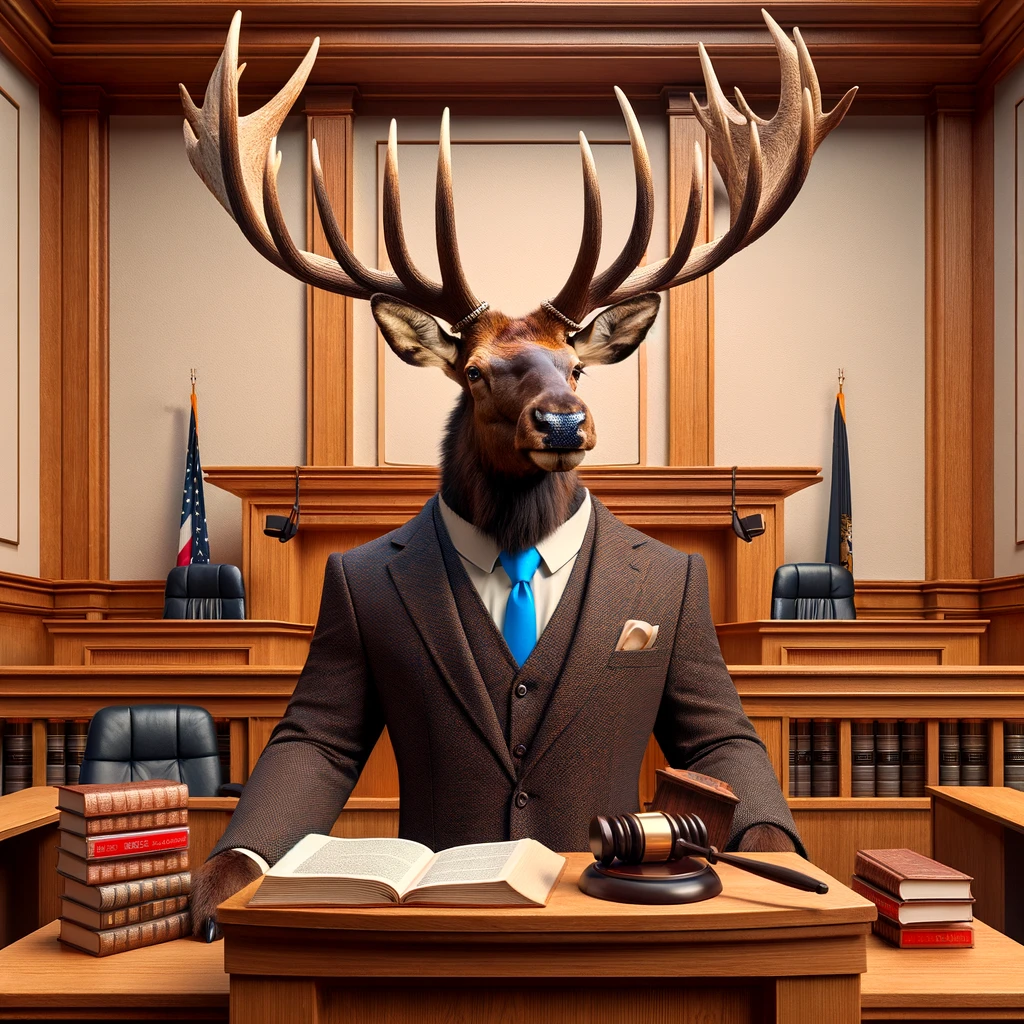Vehicle collisions with elk and other wildlife can have serious consequences for drivers and raise complex legal questions about liability. The legal implications depend on several factors, including the jurisdiction where the collision occurs, road conditions, and wildlife management laws. Below are the key considerations for understanding liability in accidents involving elk.

1. Liability and Negligence Standards
Generally, drivers are expected to maintain a reasonable duty of care to avoid collisions, which includes being alert to the presence of wildlife. However, determining negligence is complicated when an elk appears suddenly, as it may be difficult for a driver to avoid the animal. In most cases, a driver is not held liable for hitting an elk if it was an unavoidable accident.
If it can be proven that a driver was speeding, driving recklessly, or failing to adhere to warnings (e.g., wildlife crossing signs), they may be found negligent and partially or fully liable for the collision. Courts may consider factors such as weather conditions, time of day, and road visibility.
2. Liability of State or Government Agencies
In some situations, drivers may seek to hold state or local governments liable if it can be shown that they failed to take adequate measures to prevent wildlife collisions, such as not maintaining proper signage, fencing, or other mitigation measures in known high-risk areas.
Many states have sovereign immunity protections, meaning the government cannot be sued unless it explicitly waives this protection. Even where a waiver exists, proving negligence on the part of the state (e.g., failure to warn about an elk crossing area) is often challenging.
3. Insurance and Damages
In most vehicle collisions involving wildlife, the driver’s auto insurance policy plays a major role. Typically, damage from an elk collision is covered under comprehensive insurance, not collision insurance, as the incident involves an “act of nature”. If the driver has comprehensive coverage, they can file a claim for vehicle repair costs, subject to any deductible.
If the collision causes personal injury to the driver or passengers, medical expenses might also be covered under personal injury protection (PIP) or medical payments coverage (MedPay), depending on the insurance policy.
4. Wildlife Ownership and Control
Since elk are wild animals managed by state wildlife agencies, they are typically considered “ownerless”. This means that, unlike domesticated animals (e.g., livestock), no person or entity is held responsible for the behavior of the elk. Therefore, liability for the collision usually does not fall on a specific person or entity.
5. Contributory and Comparative Negligence
In some jurisdictions, the concept of comparative negligence may apply. This means that if the driver is found partially responsible for the accident (for example, by speeding or not paying attention to road signs), their compensation from an insurance claim may be reduced proportionately.
In a minority of states, contributory negligence rules apply, where if a driver is found even slightly negligent (e.g., 1% responsible), they may be barred from recovering any damages.
6. Mitigation Measures
Some states actively implement wildlife crossings, barriers, and enhanced road signs to reduce collisions with large animals like elk. The presence or absence of these mitigation measures can play a role in determining liability, particularly if a known wildlife hazard is inadequately marked.
The legal implications of elk collisions largely depend on state-specific laws, insurance policies, and the circumstances surrounding the accident. While drivers are usually not liable for collisions with wild animals like elk, exceptions can occur if they were negligent or reckless. To avoid such accidents, drivers should be cautious when driving in areas known for high elk populations, especially during dawn and dusk when elk are most active.
For accurate legal advice and a detailed understanding of liability after an elk-related accident, consulting with an attorney experienced in wildlife law and traffic accidents is advisable. Additionally, reviewing one’s auto insurance policy for comprehensive coverage can provide better financial protection in such situations.